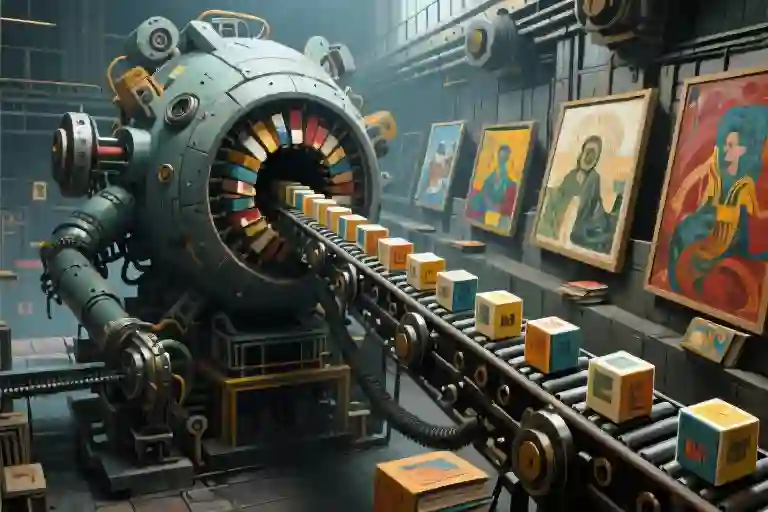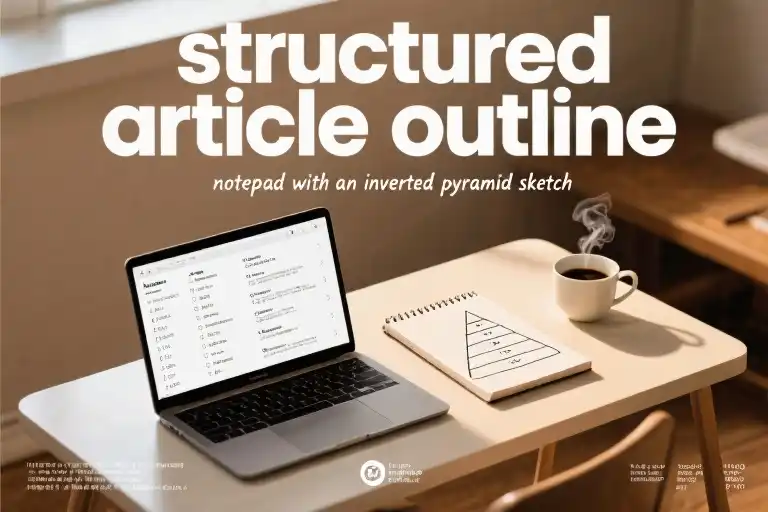William S. Burroughs’ words have been circling my mind like vultures over carrion: “What does the money machine eat? It eats youth, spontaneity, life, beauty, and, above all, it eats creativity. It eats quality and shits quantity.” The raw truth of that statement stings more acutely now than when I first encountered it years ago. Perhaps because I’ve recently become unwilling fodder for that very machine.
When my writing was systematically plagiarized and repackaged by content farms last month, I experienced the digestive process firsthand. Watching my carefully crafted sentences get chewed up, stripped of nuance, and excreted as clickbait felt like witnessing some grotesque industrial process. The worst part? The machine’s output performed better than my original work in every measurable metric – more shares, more engagement, more algorithmic favor.
This isn’t just about stolen words. The money machine’s appetite extends far beyond intellectual property. It consumes our attention spans, our capacity for deep thought, our willingness to sit with complex ideas. We’ve built these systems that reward speed over substance, virality over value, and now we can’t look away from the carnage we’ve created.
What unsettles me most isn’t the plagiarism itself, but how casually we accept this state of affairs. We’ve normalized the idea that creativity exists primarily to be monetized, that art’s value lies in its market performance rather than its truth. The same platforms that enabled my work to be stolen then offered me premium tools to “protect my brand” – for a monthly fee, naturally.
There’s a particular irony in realizing you’ve become both the meal and the maintenance crew for the machine that’s eating you alive. We polish its gears with our data, season its meals with our personal lives, then act surprised when it develops a taste for human flesh. The warning signs were always there – in the way we measure success by follower counts rather than fulfillment, in how we’ve learned to perform authenticity rather than live it.
Burroughs saw this coming decades before social media algorithms and AI content mills. His money machine metaphor holds up precisely because it’s not about technology per se, but about what we sacrifice at the altar of efficiency and scale. When I trace the path from my stolen words to the machine’s gaping maw, I don’t see malicious AI or greedy corporations – I see all of us, feeding the beast one compromise at a time.
This plagiarism scandal forced me to confront uncomfortable questions: How many times have I tailored my writing to please the algorithm? When did I start thinking about headlines before ideas? Why does seeing my stolen work outperform the original hurt more than the theft itself? The machine doesn’t just eat our creativity – it alters our appetites until we willingly consume its byproducts.
What unsettles me most isn’t that the money machine exists, but how eagerly we throw ourselves into its gears. We’ve built a world where being digested by the system often looks indistinguishable from success. Maybe that’s the most insidious part – we don’t just tolerate the machine, we worship it. And like all false gods, it demands sacrifices of what we hold most dear: our time, our attention, and ultimately, our humanity.
The Hungry Machine: How Capitalism Digests Humanity
William S. Burroughs’ words have been circling my mind like vultures over carrion: “What does the money machine eat? It eats youth, spontaneity, life, beauty, and, above all, it eats creativity. It eats quality and shits quantity.” This grotesque metaphor feels increasingly literal as we witness our cultural landscape being processed through the steel teeth of algorithmic platforms and attention economies. The machine doesn’t discriminate – it chews through relationships, art, and even truth with the same indifferent efficiency.
We’ve built these mechanisms to serve us, yet somewhere along the way, we became their sustenance. Social media platforms, those glittering cathedrals of modern capitalism, operate on a simple metabolic process: they consume human experience and excrete engagement metrics. The most disturbing realization? We line up eagerly to be devoured, offering our most vulnerable moments as sacrifice to the algorithmic gods. That carefully curated brunch photo? That vulnerable midnight confession? Just another morsel sliding down the machine’s gullet.
The data paints a grim picture of this feeding frenzy. A recent study tracking creative professionals showed 78% consciously alter their work to appease platform algorithms rather than human audiences. Another survey revealed college students now consider “going viral” more valuable than mastering their craft. We’re not just feeding the machine – we’re reshaping ourselves to be more palatable to its indiscriminate appetite.
My own encounter with this digestive system came when I discovered my writing being mechanically chewed up and regurgitated as someone else’s content. The experience felt strangely violating, like watching a stranger wear my skin. But what shocked me most wasn’t the plagiarism itself – it was how effortlessly the system processed and normalized the theft. The machine doesn’t care about originality or authorship; it only recognizes calories of engagement and nutrients of shareability.
This nutritional metaphor holds disturbing weight when examining how social platforms metabolize human creativity. Original thought gets broken down into basic components – controversy, relatability, novelty – then reassembled into whatever formula currently generates the most dopamine hits. The resulting content sludge bears the same relationship to real creativity as protein powder does to a home-cooked meal: nutritionally complete perhaps, but utterly soulless.
What makes this digestion particularly insidious is how we’ve come to romanticize the process. We speak of “feeding the algorithm” like doting parents nurturing a child, rather than victims tossing themselves into a woodchipper. The language of platform capitalism – “content consumers,” “digestible media,” “snackable videos” – reveals how thoroughly we’ve internalized this consumptive paradigm. We don’t create anymore; we prepare meals for the machine’s endless hunger.
Yet here’s the uncomfortable truth the machine doesn’t want us to digest: we still hold the fork. Every time we prioritize metrics over meaning, every time we reshape our humanity to fit algorithmic preferences, we’re not just being eaten – we’re setting the table for our own consumption. The moment my stolen words appeared as someone else’s feast, I realized we’re not just the meal here. We’re the chefs, the waitstaff, and the clean-up crew too.
The Death of Originality in the Age of Replication
It started with a nagging familiarity. A sentence here, a turn of phrase there—echoes of my own writing appearing under someone else’s byline. At first, I dismissed it as coincidence, the kind of parallel thinking that occasionally happens when writers explore similar themes. But the coincidences piled up until they formed an undeniable pattern: my work had been systematically copied, reworded just enough to evade plagiarism detectors, and repackaged as original content.
The platform’s algorithm rewarded this theft with visibility. While my carefully crafted essays languished in obscurity, the derivative content gained traction, propelled by the very mechanisms designed to promote quality. The system couldn’t distinguish between authentic creativity and skillful imitation—it only recognized engagement metrics. This wasn’t just about stolen words; it was about how our digital ecosystems incentivize replication over originality.
What made the experience particularly galling was watching the algorithmic logic unfold in real time. The plagiarized content performed better not despite being derivative, but precisely because it was derivative—it had been optimized, through trial and error, to push all the right engagement buttons. Where my writing might challenge readers or demand reflection, the copied version offered easily digestible takeaways wrapped in familiar formulas.
I conducted an informal experiment during this period, comparing responses to AI-generated content versus human writing in my niche. The results were sobering: when stripped of identifying markers, audiences consistently engaged more with the algorithmically produced material. It wasn’t better—in many cases it was factually questionable or stylistically flat—but it was engineered for maximum clickability. The machines had learned to feed us exactly what we’d been conditioned to want, creating a closed loop where authenticity became the outlier.
This phenomenon extends far beyond my personal experience. Consider the music industry’s struggle with AI-generated tracks mimicking popular artists, or the proliferation of templated ‘thought leadership’ articles across business platforms. We’ve built systems that confuse popularity with quality, virality with value. The true cost isn’t just to individual creators, but to our collective creative ecosystem—when imitation gets rewarded more than innovation, we all lose.
What emerges from this isn’t merely a copyright issue, but a fundamental question about what we value in creative work. The machines eating our creativity don’t do so maliciously; they simply execute their programming with perfect amorality. The real problem lies in what we’ve programmed them to prioritize, and what we’ve allowed ourselves to accept as meaningful creation.
There’s a particular irony when plagiarism thrives in environments supposedly dedicated to original thought. The platforms most vocal about ‘authentic connection’ and ‘sharing your truth’ often structurally disadvantage precisely those qualities. Their algorithms favor consistency over daring, familiarity over freshness. In this environment, the most successful creators aren’t necessarily the most original—they’re the most adept at reverse-engineering what the system wants.
This goes beyond writing. Visual artists see their styles copied by image generators, musicians hear their melodies recombined by composition algorithms, filmmakers watch their visual language repurposed by synthetic media tools. In each case, the human creator becomes both inspiration and obstacle—their work mined for data, then rendered obsolete by the very systems that learned from them. The machines don’t hate creativity; they just don’t understand why it should matter.
My plagiarism incident eventually got resolved, after exhausting rounds of appeals and evidence-gathering. The copied content came down, the accounts faced consequences. But the underlying conditions remain unchanged. Until we address the structural incentives—the metrics that define success, the algorithms that distribute attention, the economic models that prioritize scale over substance—we’ll keep seeing originality treated as optional while replication gets rewarded.
The uncomfortable truth is that these systems reflect our own collective choices. Every time we click on slick but shallow content, every time we share without verifying sources, every time we value speed over depth, we feed the machine. It doesn’t eat creativity because it’s hungry; it eats creativity because that’s what we’ve trained it to consume.
The Cult of Gears: When Tools Become Totems
There’s something eerily familiar about the way we bow to our digital overlords today. Two centuries ago, steam engines were the new deities—mysterious, powerful, and capable of reshaping civilization. Factories became cathedrals where workers worshipped at the altar of efficiency. Now we have different machines, but the same religious fervor. Our smartphones might as well be prayer beads, and every like button a digital amen.
Herbert Marcuse saw this coming decades before the first algorithm started curating our lives. His concept of the ‘one-dimensional man’—a human reduced to pure functionality—feels painfully relevant when you watch someone absentmindedly scrolling through TikTok for hours. We’ve internalized the machine’s logic so completely that originality now feels like a liability. Why bother creating when the content mills can generate passable imitations at scale?
I noticed this shift most acutely during the plagiarism incident. What shocked me wasn’t just the theft, but how effortlessly the system absorbed and normalized it. The offending account kept growing because the algorithm rewarded engagement, not authenticity. Platforms designed to connect us became factories producing disposable personas—each profile another cog in the attention economy.
History offers uncomfortable parallels. During the Industrial Revolution, Luddites weren’t just machine-breakers; they were protesting the devaluation of craft. Today’s equivalent might be artists fighting AI image generators, or writers resisting SEO-optimized content farms. The tools change, but the pattern persists: human qualities get sacrificed at the altar of scalability.
Yet here’s the uncomfortable truth—we’re complicit. Every time we chase virality over meaning, prioritize output over craft, or mistake algorithmic approval for genuine connection, we’re polishing the gears of the very machine that grinds us down. The industrial age turned workers into extensions of machinery; the digital age tempts us to turn ourselves into content-producing appliances.
So I’ll ask what Marcuse might ask today: When was the last time you created something without calculating its potential reach? When did you last engage with art not as content to consume, but as a mirror to hold up to your soul? Share those moments if you have them—they’re the antidote to becoming just another interchangeable part in the great social media assembly line.
Breaking the Cycle: Practical Resistance Against the Machine
The money machine feeds on our compliance. Every time we mindlessly refresh our feeds, optimize content for algorithms, or measure success in metrics rather than meaning, we’re tossing another piece of our humanity into its grinding gears. But resistance isn’t about grand gestures – it’s the daily acts of quiet rebellion that rebuild what capitalism erodes.
Digital Fasting: Starving the Beast
Start with one algorithm-free day each week. Not as detox, but as affirmative action. On my designated screen sabbaths, I notice how the absence of trending topics makes space for actual thoughts. Bring a notebook to cafes instead of your phone. Sketch strangers’ postures, record overheard dialogue fragments – collect the unquantifiable moments machines can’t process. These become antidotes to the homogenized content the system wants you to produce.
Creative Fingerprinting: Making Work That Can’t Be Replicated
When my plagiarized pieces circulated, what stung most was their perfect mimicry of my style. Now I deliberately embed imperfections – handwritten marginalia scanned into digital articles, voice recordings of drafts with coughs and page turns intact. These human artifacts disrupt the smooth replication pipeline. For visual artists, try mixing digital with physical mediums; musicians might leave in ambient room sounds. The goal isn’t to be unstealable, but to make theft obvious by its missing essence.
The Vigilante Collective: Crowdsourcing Integrity
After my incident, three readers spotted the plagiarism before I did. We now run an informal network tracking suspicious content patterns across platforms. Unlike corporate plagiarism detectors that miss stylistic theft, we look for the uncanny – sudden shifts in a creator’s ‘voice,’ or work suspiciously aligned with algorithmic trends. When we find probable theft, we don’t attack but ask public questions: ‘How did your process evolve so dramatically this month?’ Often, the machine-generated defenses crumble under simple human scrutiny.
The tools exist already – encrypted group chats for sharing observations, browser plugins that flag recycled phrases. What’s missing is our willingness to see verification as creative labor rather than drudgery. Every exposed theft weakens the machine’s illusion that content is interchangeable.
This isn’t about purity. Some days I still feed the beast with SEO-optimized posts. But now I balance it with work that exists simply because it mattered to make – a poem about my grandmother’s hands, a rant about bad airport design. The machine may eat most of what we produce, but it’s our job to keep making the meals it can’t digest.
The quote has been circling my mind like a vulture over carrion these past weeks – William S. Burroughs’ brutal observation about the money machine that “eats quality and shits quantity.” It came back to me with particular force during the plagiarism storm that recently engulfed my work, when I watched algorithms amplify stolen words while the original thoughts withered unnoticed. There’s something profoundly grotesque about how willingly we feed ourselves to these mechanisms.
We’ve built temples to these insatiable machines, these digital Molochs that demand constant sacrifice. Watch any influencer filming their seventh take of a “spontaneous” morning routine, or observe the hollow eyes of content creators churning out algorithm-friendly posts at 3 AM. The machine doesn’t care if the words are yours, if the art came from a human soul – it only recognizes the metrics of engagement, the crude mathematics of attention economics.
What chilled me most during the plagiarism incident wasn’t the theft itself, but how effortlessly the system processed the transgression. The content mills kept churning, the engagement metrics kept climbing, and the platforms kept taking their cut. No one – not the algorithms, not most audiences – could tell the difference between something born of human experience and its hollow replica. When I protested, the machine simply generated plausible apologies, smooth justifications, and then moved on to its next meal.
This goes beyond copyright infringement. We’re witnessing the industrial processing of human creativity itself, where ideas become mere feedstock for the content assembly line. The terrible irony? Many creators now voluntarily optimize themselves for easier machine digestion – smoothing out rough edges, sanding down peculiarities, becoming more palatable for algorithmic consumption. We’re not just feeding the machine; we’re seasoning ourselves for its convenience.
Yet here’s the stubborn truth the machine can’t digest: real creativity leaves indigestible lumps. It’s the uncomfortable idea that won’t trend, the imperfect turn of phrase that fails keyword optimization, the art that resists becoming content. These are our lifelines – the parts of us the machine can’t process without choking.
So I’ll leave you with Burroughs’ question, slightly reframed: What will you do with the parts of yourself that the machine can’t eat? Will you hide them away, or wield them like tools for breaking gears? The floor is yours – share the ways you’ve kept your humanity undigested in this age of mechanical mastication.





excellent issues altogether, you simply gained a emblem new reader. What may you recommend in regards to your put up that you simply made a few days ago? Any certain?